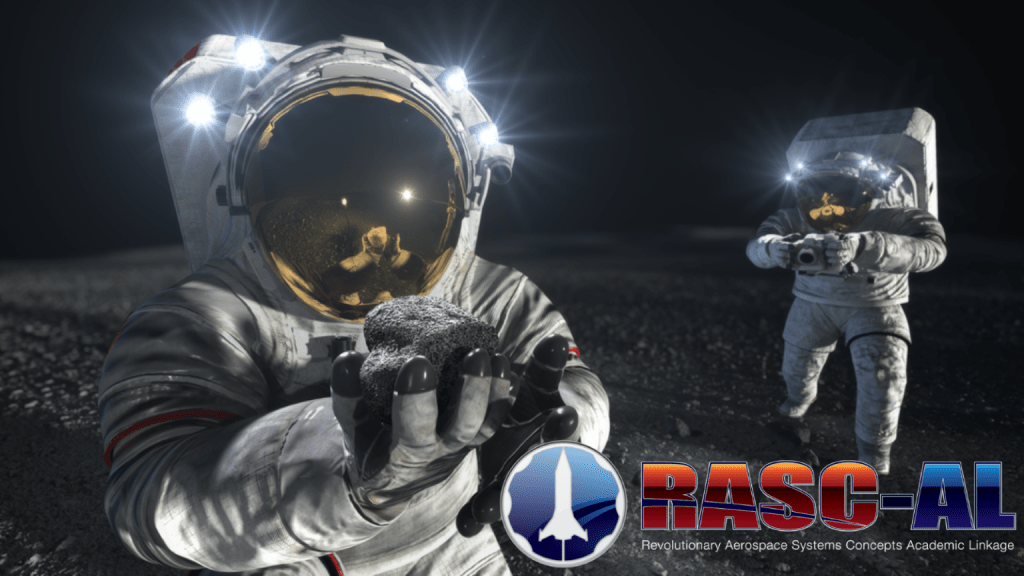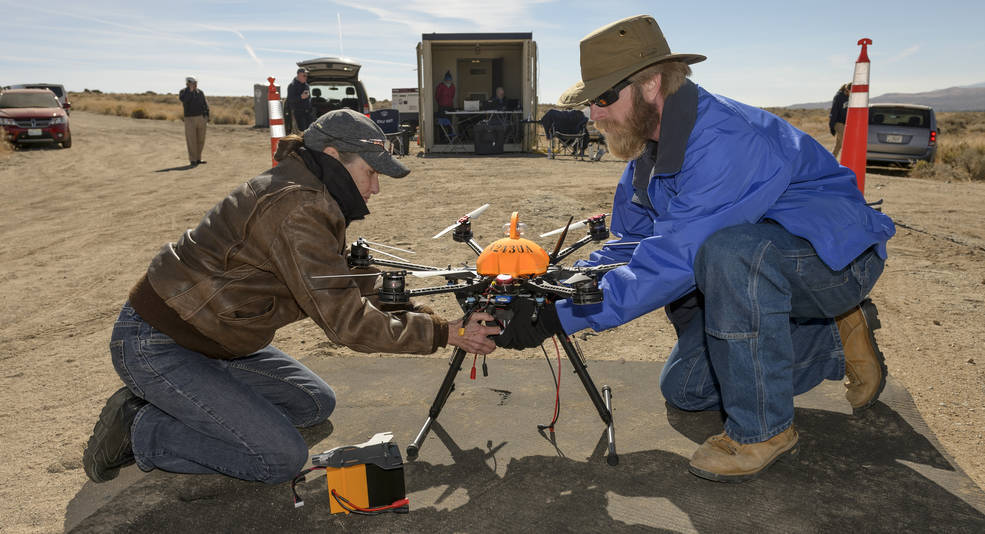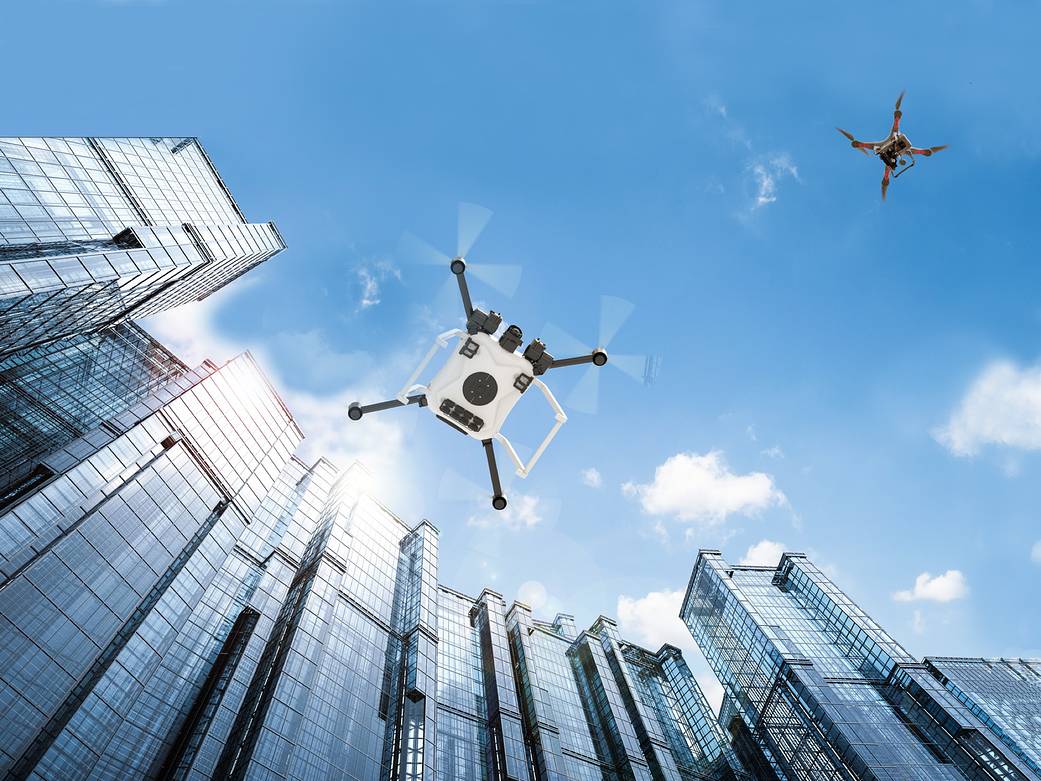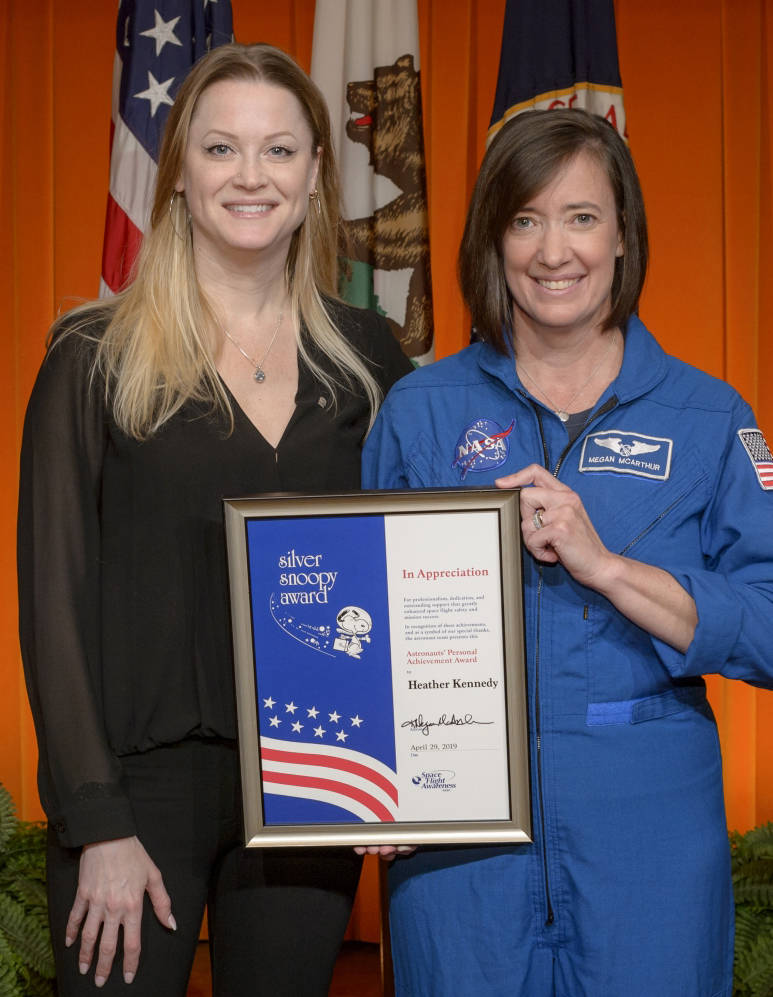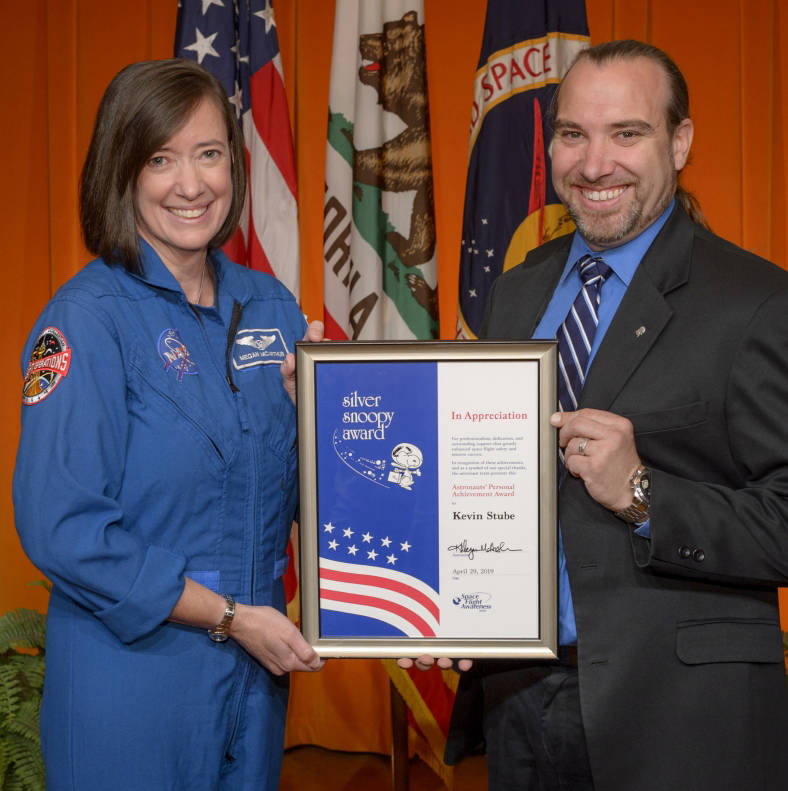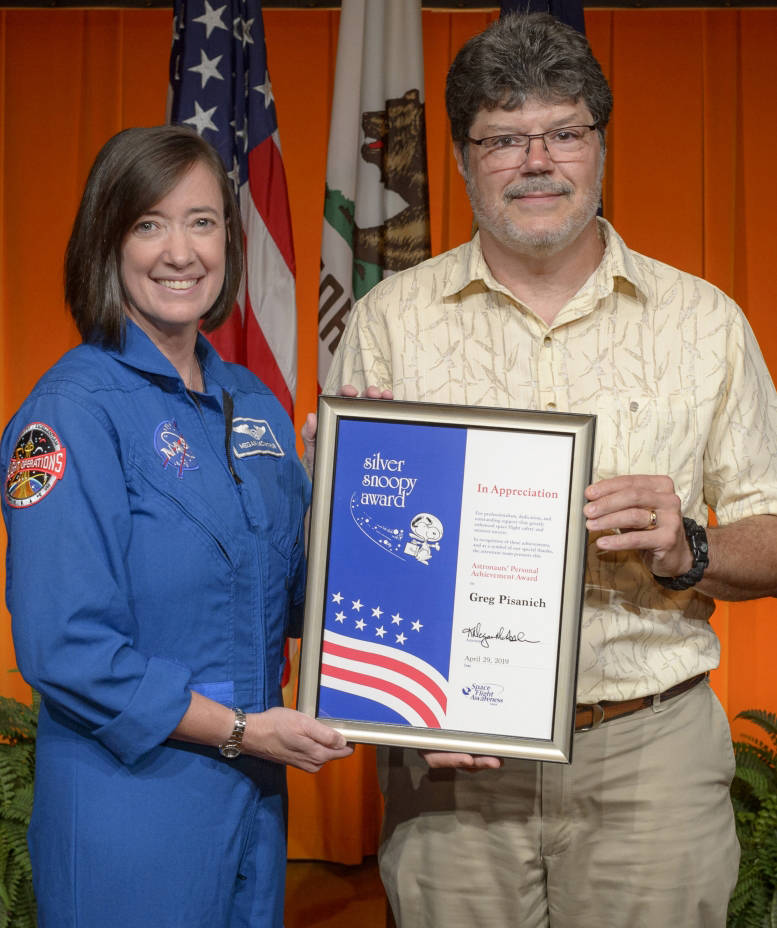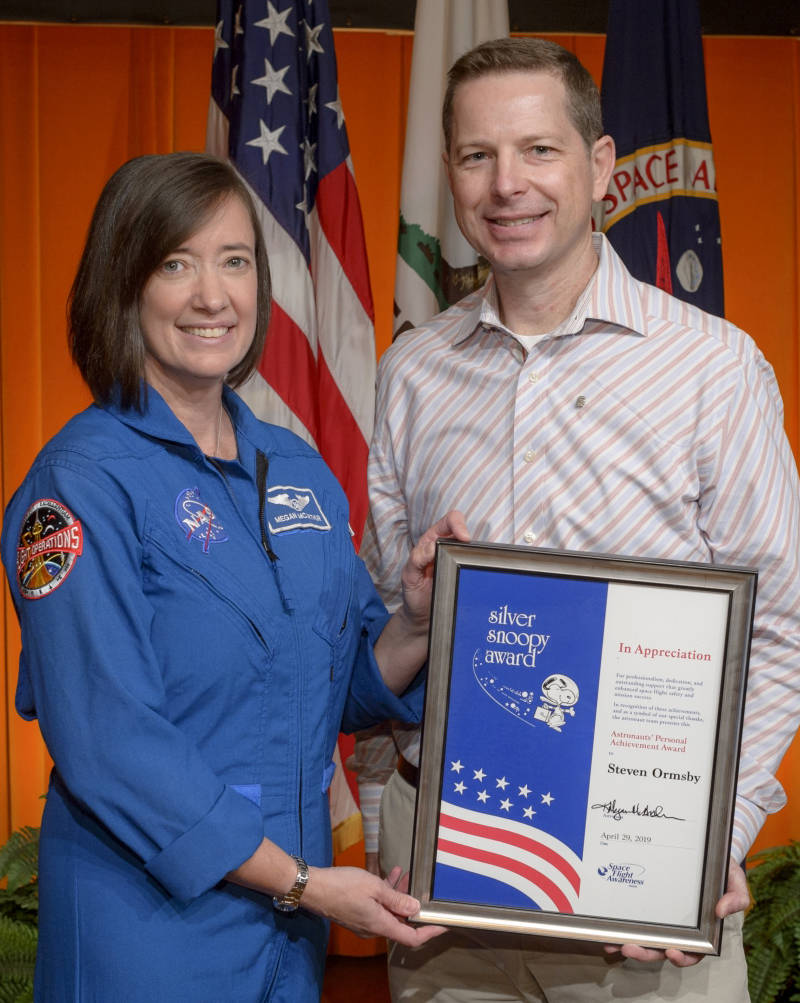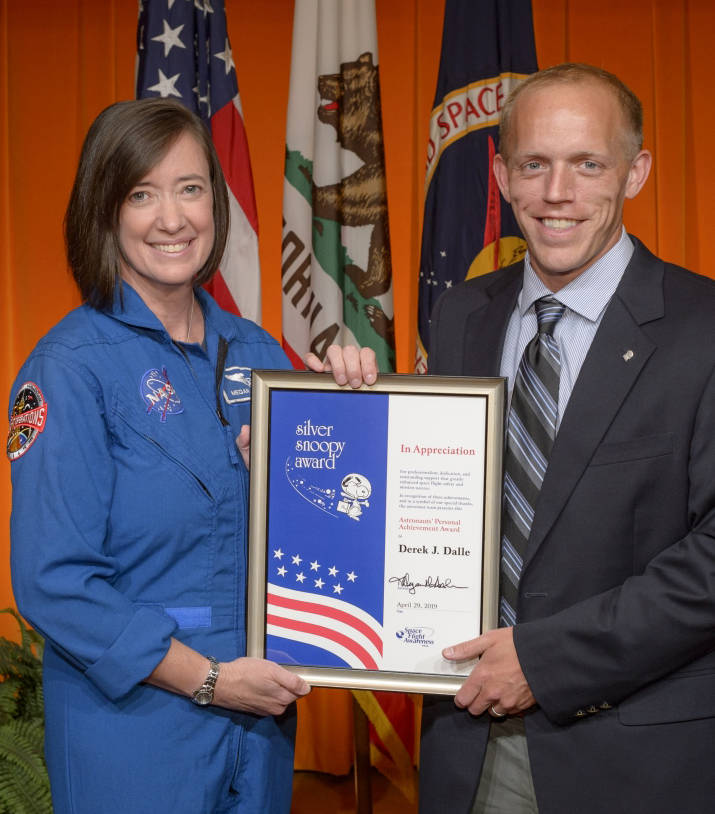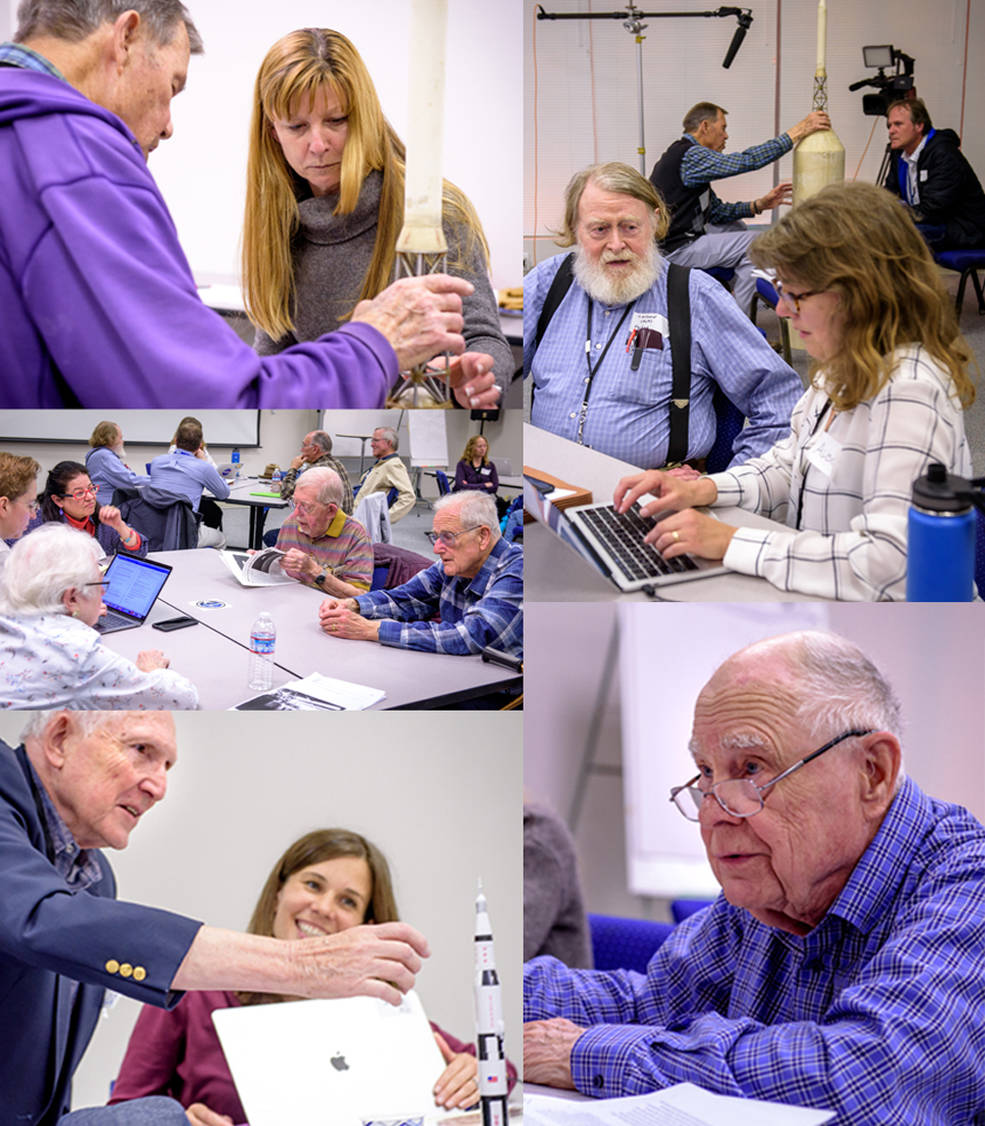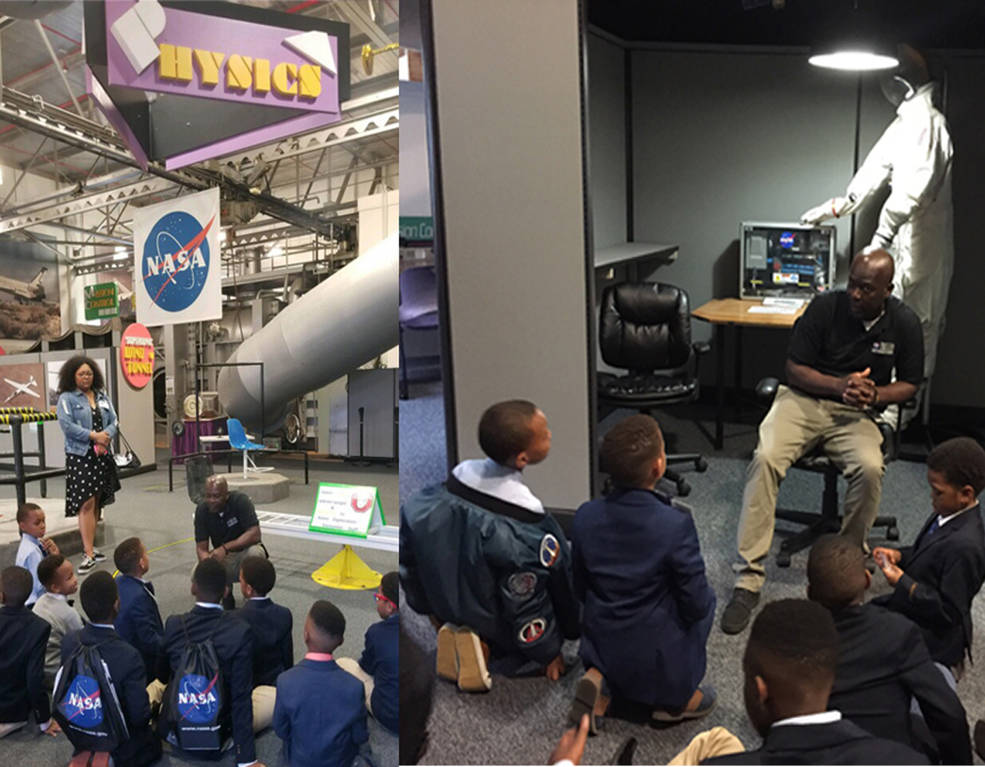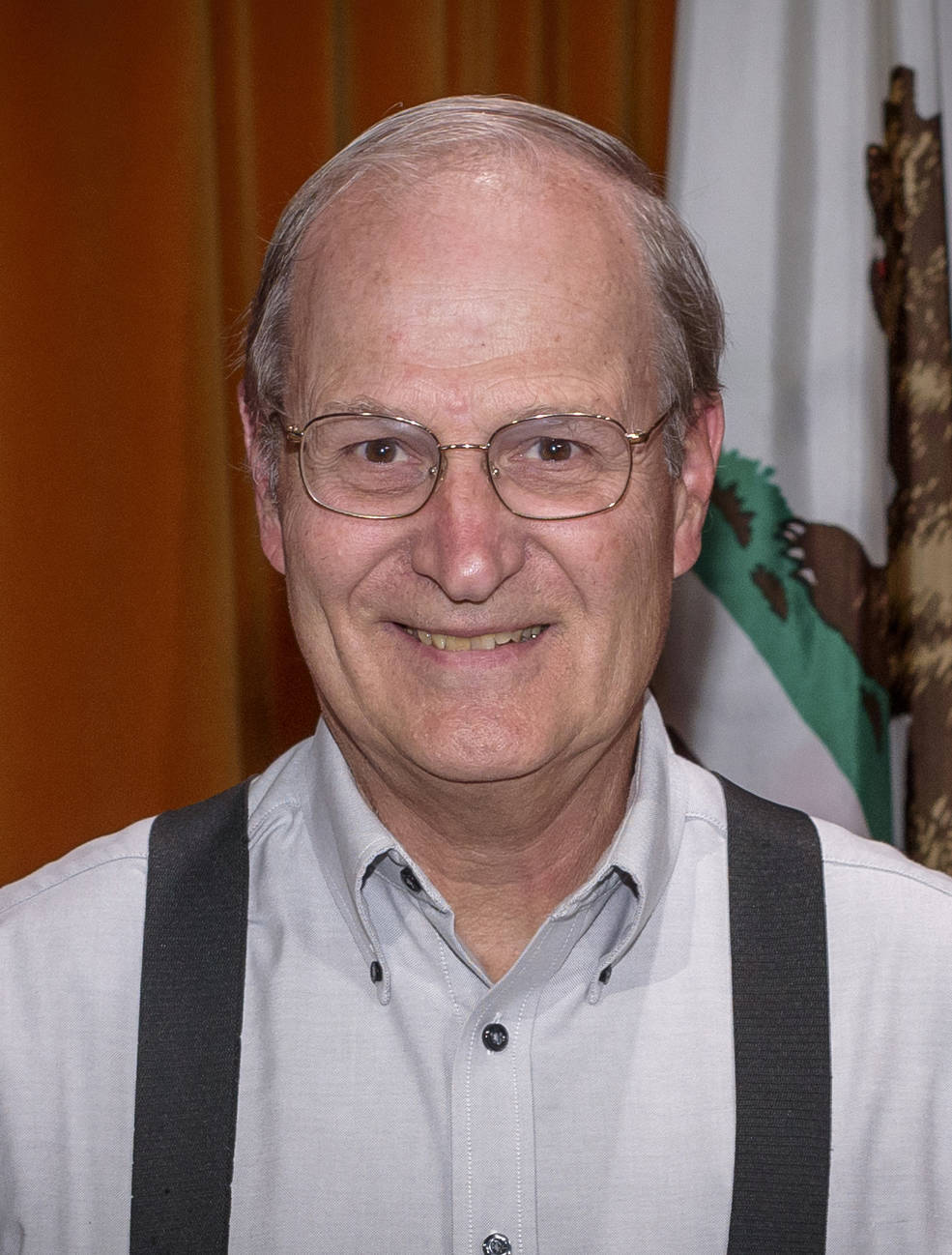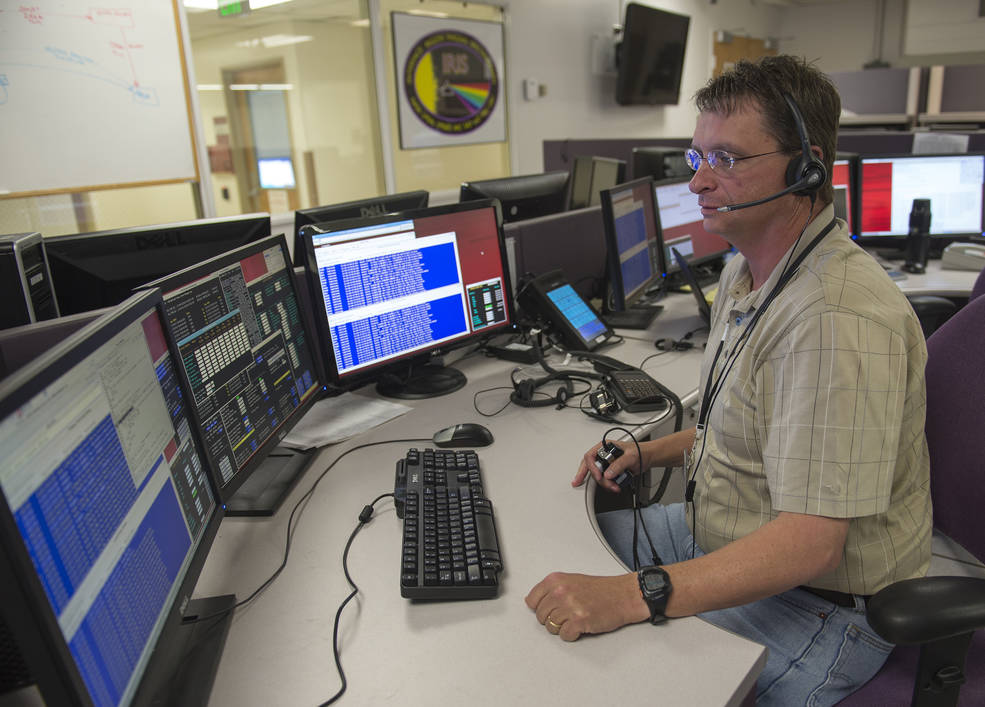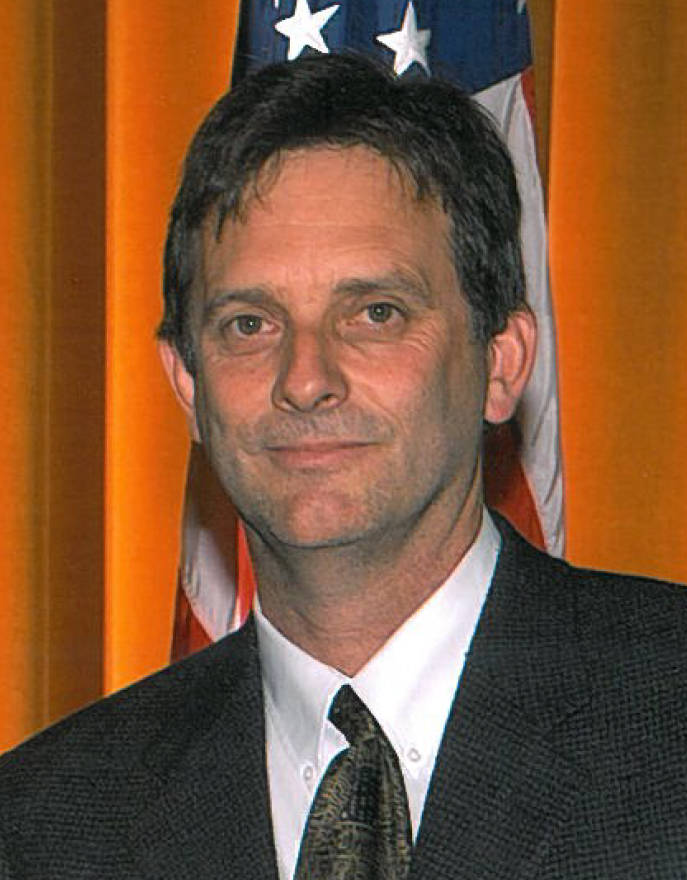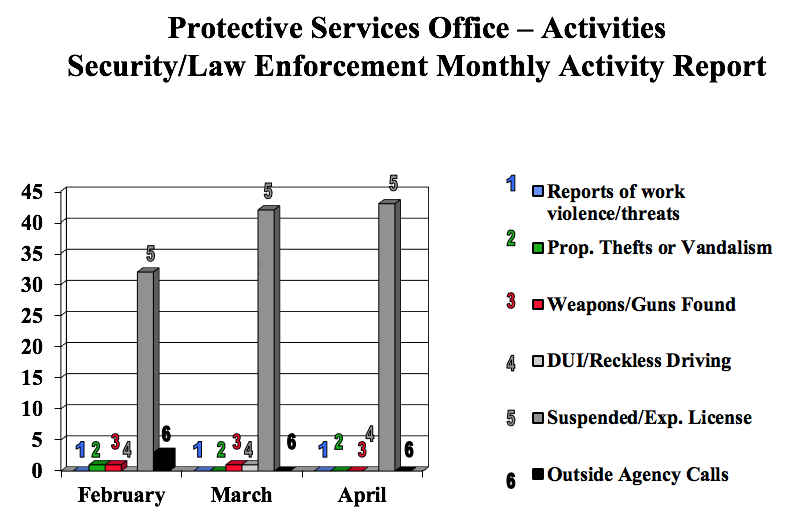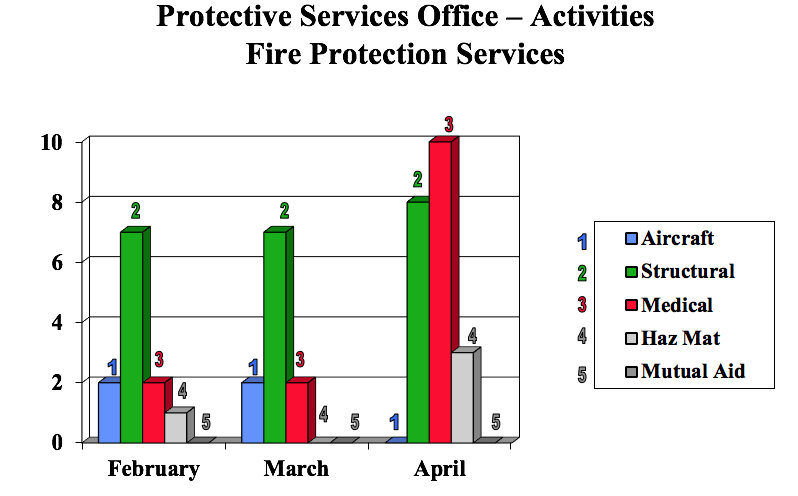NASA’s Working to Make Low-flying Air Traffic Safe
by Tiffany Blake
Ever wonder what the skies will look like in the next 5-10 years? Can you imagine stepping onto your balcony on a sunny day, seeing drones buzzing around? They could be delivering food and goods to doorsteps, hovering around backyards for family fun or over highways for traffic monitoring. An estimated 700,000 unmanned aircraft systems, called UAS, but commonly referred to as drones, are expected to be roaming the sky by the year 2020. Many have questions about how such a big change to the airspace will affect our lives and safety.
NASA Ames has set out to create a research platform that will help manage drones flying at low altitude along with other airspace users. Known as UAS Traffic Management, or UTM, the goal is to create a system that can integrate drones safely and efficiently into air traffic that is already flying in low-altitude airspace. That way, package delivery and fun flights won’t interfere with helicopters, nearby airports or even safety drones being flown by first responders helping to save lives.
For full story, see: airtraffic
Ames Veterans Committee Hosts Early Memorial Day Observance
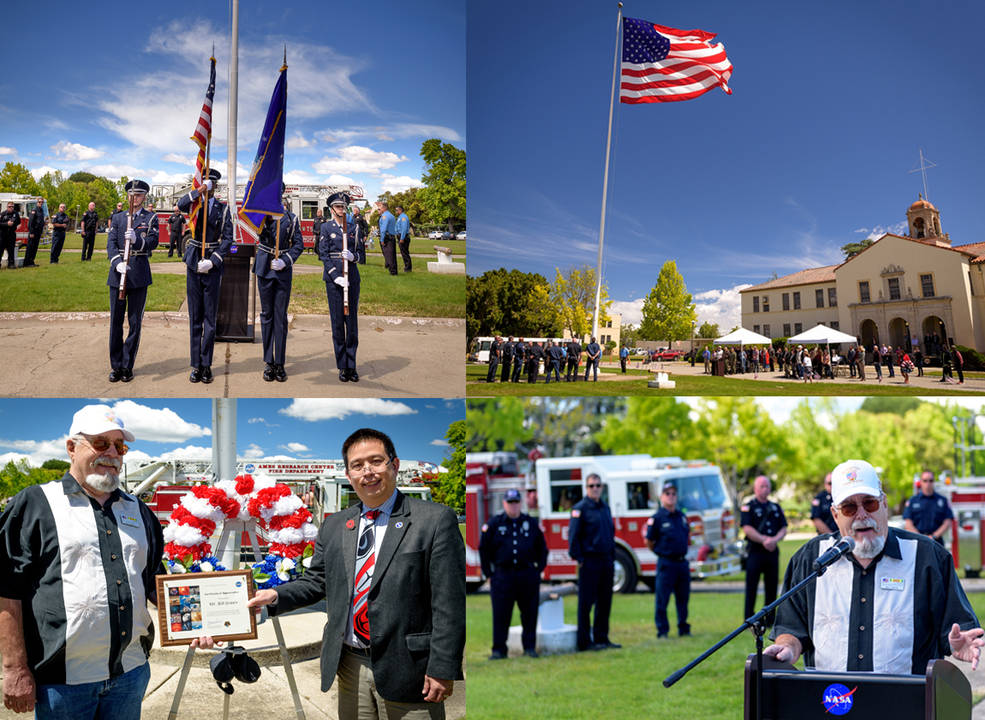
Big City Life Awaits Drones in Final Year of NASA Research
by Abigail Tabor
City life has its challenges. The crowds, the traffic, pedestrians at the mercy of the weather or tripping on the curb, their eyes glued to the maps on their phones… The struggle is real, and drones – also known as unmanned aircraft systems, or UAS – will face some of the same challenges in our cities in the near future. By 2020, there could be as many as 400,000 commercial small UAS registered in the United States, along with some two million for recreational use. Many jobs – those too dirty, dangerous, or dull for people – are already emerging for drones, everywhere from farms in the heartland to the urban jungle. Especially in that urban environment, we’ll need a way to keep all that activity in the air running safely and smoothly.
Since 2015, NASA has researched the ins and outs of building a system to do just that, with its Unmanned Aircraft Systems Traffic Management project, or UTM. The team works with the Federal Aviation Administration and many other partners to understand how a nationwide system for drone traffic could be created from scratch. Now, from May through August 2019, UTM is tackling its final and most complex season of flight tests, called Technical Capability Level 4. With TCL4, they’re taking on the unique challenges of flying small drones in the urban landscape.
For full story, see: CityLifeDrones
Return to the Moon Activities Discussed/VPP Star Status Certification Celebrated
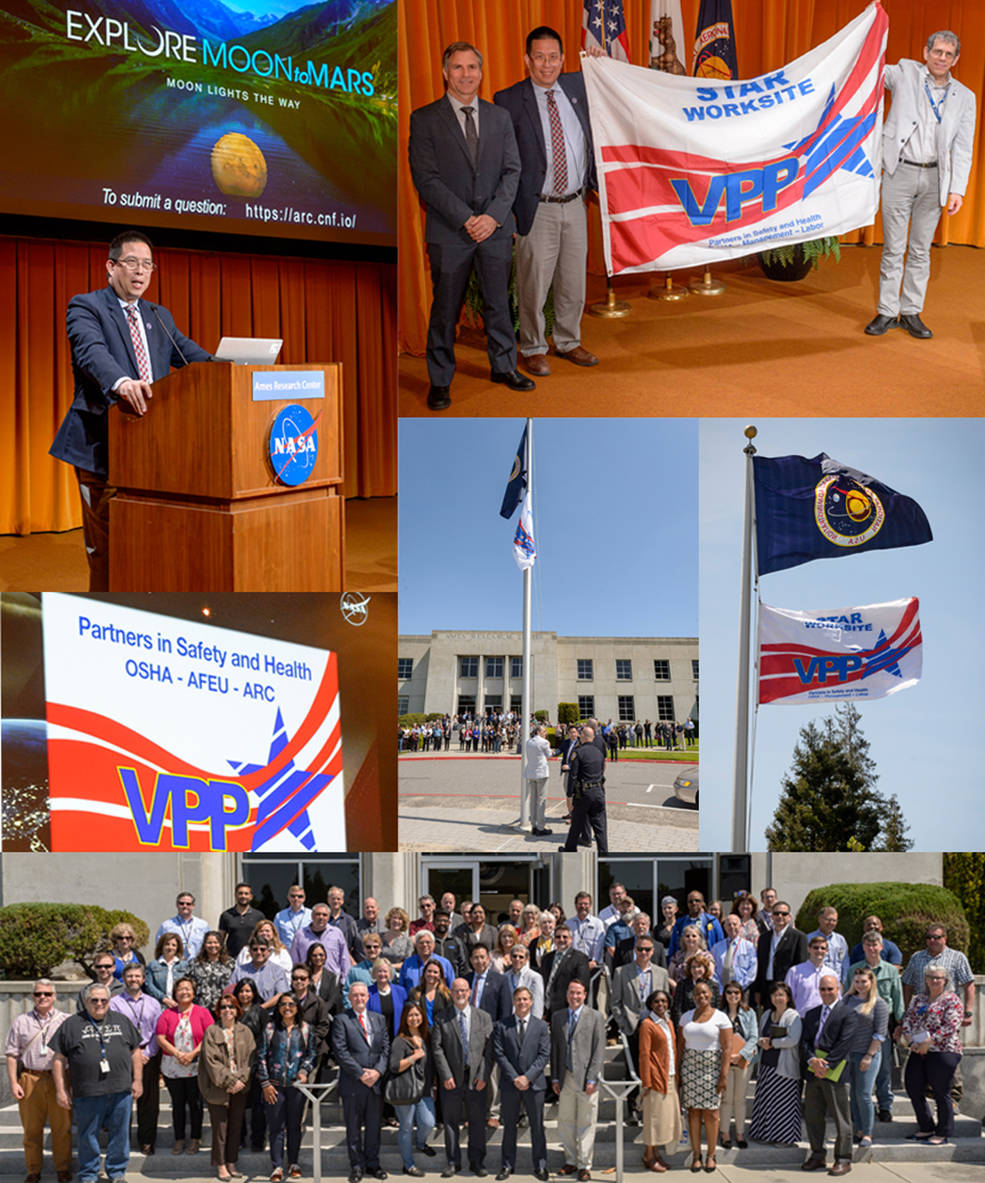
Here’s Looking at You! Astrobee’s First Robot Completes Initial Hardware Checks in Space
NASA astronaut Anne McClain performs the first series of tests of an Astrobee robot, Bumble, during a hardware checkout. To her right is the docking station that was installed in the Kibo module on the International Space Station on Feb. 15. Bumble, and another robot named Honey, launched to the space station on Apr. 17, aboard Northrop Grumman’s eleventh commercial resupply services mission from NASA’s Wallops Flight Facility in Virginia. When needed the robots will be able to return to their docking station on their own and recharge their battery power.
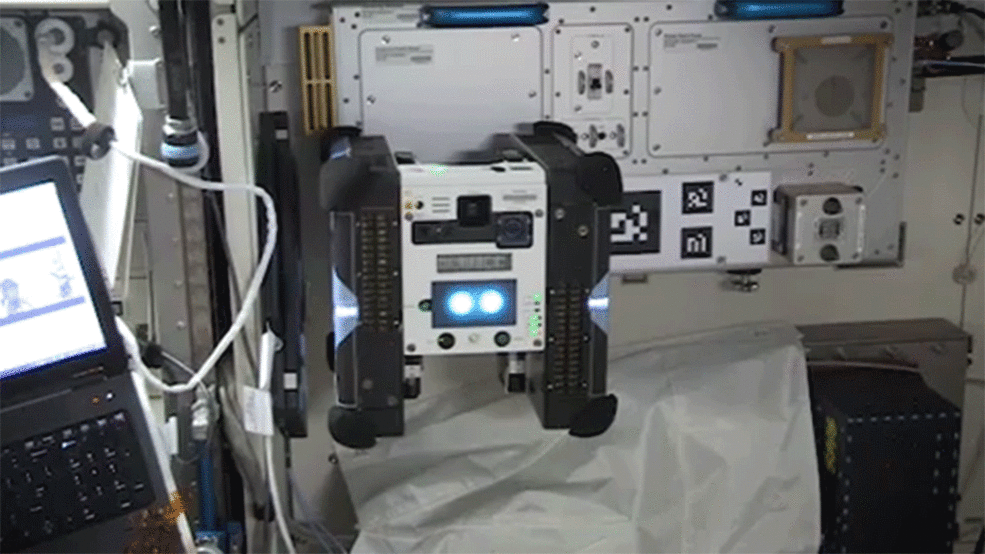
For full story, see: AstrobeeHardwareCheck
Completion of Tech Development Phase of HEEET Discussed
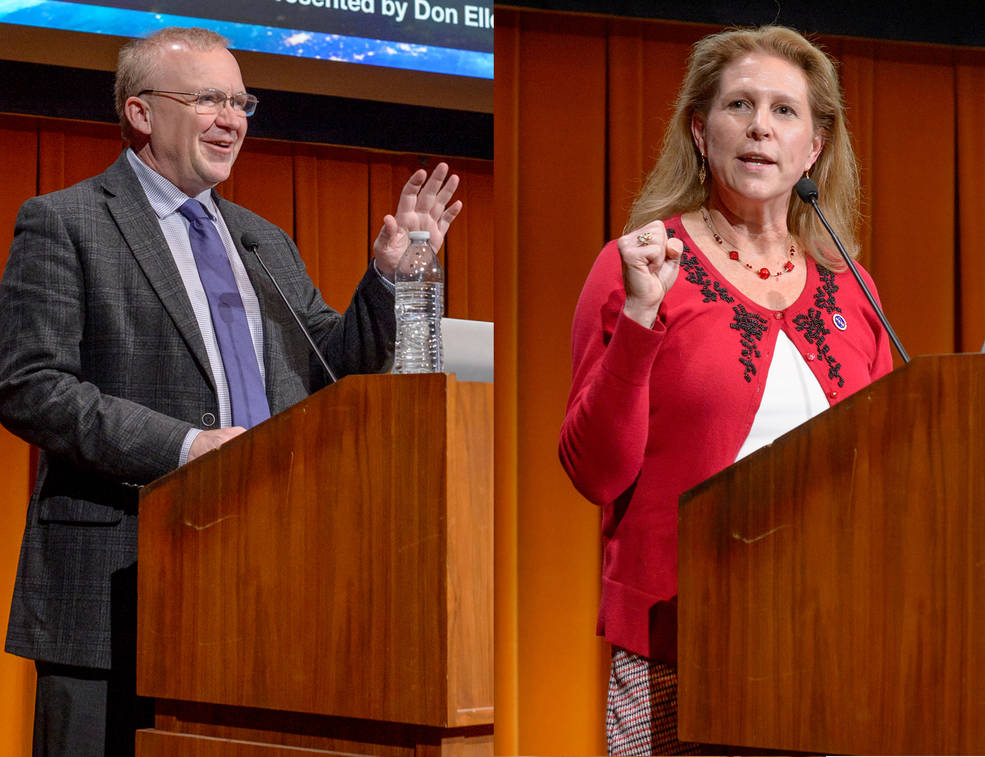
NASA Takes a Deep Dive into the Search for Life with SUBSEA
by Abigail Tabor
Deep space and the deep sea are not as different as you might think. In 2018 and 2019, NASA’s search for life beyond Earth is diving beneath the waves here at home to explore hydrothermal systems of underwater volcanoes. These special locations could look a lot like what we’ll find on the other ocean worlds in our solar system – prime candidates to potentially support life.
Many projects at NASA study places on Earth that could be analogous to extraterrestrial locations. The project pulling together ocean and space is called SUBSEA, which stands for Systematic Underwater Biogeochemical Science and Exploration Analog. While searching for clues about similar environments on other ocean worlds and their potential to support life, the team will also assess the best ways to conduct a remote science mission and streamline future exploration. This could have implications for near-term human exploration destinations like the Moon and Mars
This synergy of ocean and space research makes a lot of sense, when you realize that in both fields robotic explorers are sent to work where humans can’t easily go, with input from groups of people both relatively nearby and much farther afield. Combining the two worlds allows the SUBSEA team, led by Darlene Lim of NASA Ames, to help prepare for new types of space exploration missions by practicing now under realistic conditions on Earth.
For full story, see: SUBSEA
Comet Provides New Clues to Origins of Earth’s Oceans
by Nick Veronico
The mystery of why Earth has so much water, allowing our “blue marble” to support an astounding array of life, is clearer with new research into comets. Comets are like snowballs of rock, dust, ice, and other frozen chemicals that vaporize as they get closer to the Sun, producing the tails seen in images. A new study reveals that the water in many comets may share a common origin with Earth’s oceans, reinforcing the idea that comets played a key role in bringing water to our planet billions of years ago.
The Stratospheric Observatory for Infrared Astronomy, SOFIA, the world’s largest airborne observatory, observed Comet Wirtanen as it made its closest approach to Earth in December 2018. Data collected from the high-flying observatory found that this comet contains “ocean-like” water. Comparing this with information about other comets, scientists suggest in a new study that many more comets than previously thought could have delivered water to Earth. The findings were published in Astronomy and Astrophysics Letters.
For full story, see: CometClues
Hammering Away at the Dynamic Stall Problem to Build Better Rotorcraft
by Jill Dunbar
For more than ten years, NASA research scientist Neal Chaderjian has been developing improved simulation software that can be used to design safer, faster and more energy-efficient rotorcraft. Improving aerodynamic performance during rotorcraft vertical takeoff and landing plays a critical role for medical and military transport, firefighting, police surveillance and the emerging urban air mobility (UAM) market. Chaderjian, who works at the NASA Advanced Supercomputing (NAS) facility at NASA Ames, has improved our fundamental understanding of rotorcraft flows, including dynamic stall.
It is challenging to accurately predict dynamic stall, where air flow separation on a helicopter rotor causes a sudden decrease in thrust and large structural vibrations—ultimately limiting the vehicle’s maximum flight speed. “And everyone wants to go faster,” Chaderjian notes.

For full story, see: BuildingBetterRotorcraft
Prestigious 2019 Silver Snoopy Awards Presented for Outstanding Performance
Astronaut Megan McArthur Behnken presented the 2019 Silver Snoopy Awards to recipients on April 29, 2019. This award is the astronauts’ personal achievement award that provides special recognition for non-management individuals from both government and industry for outstanding performance, contributing to flight safety and mission success. This prestigious award is one of the most coveted honors and fewer than one percent of the aerospace program workforce receives it annually, making it a special honor to receive this award. For additional information, see: https://www.nasa.gov/directorates/heo/sfa/aac/silver-snoopy-award The awards were presented to Heather Kennedy, Kevin Stube, Greg Pisanich, Steven Ormsby and Derek Dalle.
Asian American Pacific Islander Heritage Celebrated with Viewing of “Good Luck Soup”

There’s Something Larger than the 80-Foot-by-120-Foot Wind Tunnel at Ames?
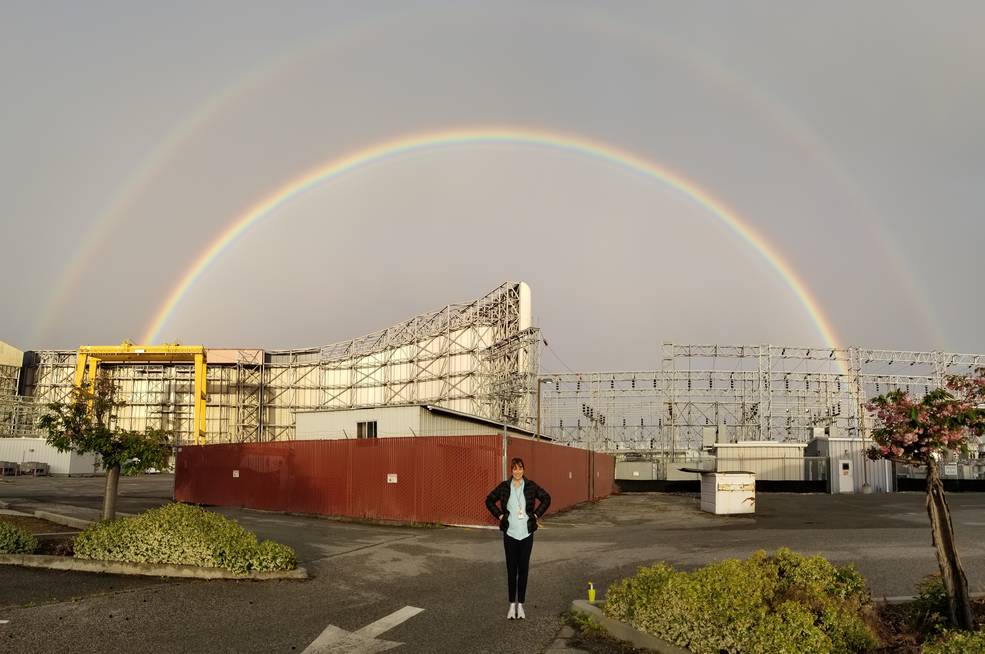
Ames’ Turkeys Ask, “What Do You Mean the Shuttle’s Been Retired, We Brought Our Kids!”
Apollo Veterans Share Their Stories for Apollo 11 Moon Landing Anniversary in July
Young Gents, Inc., Group Inspired After Visit to Ames Education Encounter
by James Gbetrah
The Ames Education Encounter (AEE) had a visit by the Young Gents group on April 5, 2019. Young Gents, Inc. is a social enterprise designed to normalize black excellence for boys of color (ages 6-12) through hands-on exposure to etiquette, social intelligence, business and leadership development, community engagement and travel. An extensive collaborative effort was conducted with the following: the Education and Outreach Department, the NASA African American Advisory Group and the Ames Exploration encounter staff to enable Young Gents group visit NASA Ames Research Center.
The tour began with an introduction of NASA Ames Research Center and the AEE. The AEE staff highlighted the importance of the research conducted at the Center and later allowing students to experience authentic NASA STEM content and curriculum. Some of the highlights presented to the Young Gents were physics (angular momentum, the orbital chair, gyroscopic motion, Air Traffic Control and Journey to Mars). The students got to experience a fun spin moment in the orbital chair while learning how to calculate the path of a spacecraft and its destination celestial object. They also experienced the angular momentum spin machine which demonstrated how a spacecraft increases and decreases its speed when in a zero gravity atmosphere. Newton’s First Law of motion (for every action there is an equal and opposite reaction) was demonstrated via the gyroscopic chair and a rotating bicycle wheel that described how a space craft is able to change its direction with a torque.
The students were captivated via the entire AEE tour as they weaved their imaginations of real life experiences with NASA science. When asked, “what was your favorite experience at Ames?” young gent Connor Clinkscale responded, “the angular momentum activity was awesome because I spun around extremely fast and I didn’t get dizzy!”
When asked what did he think about a career in space, Connor confidently said, “I am an aspiring astronaut and it was pretty awesome walking the grounds at NASA and meeting the people I will eventually work with one day.”
NASA Community College Aerospace Students Visit Ames
NASA Ames’ STEM Engagement hosted the onsite workshop for the NASA Community College Aerospace Scholars, or NCAS, the week of April 15, 2019. Thirty-eight high-achieving students spent four days in an intensive, hands-on learning experience that involved learning multiple skills from project management to programming and designing their version of a Mars rover. Each company battled it out on a Mars-like terrain in which they were tasked to collect samples of rocks, identify minerals and rescue other rovers. Four scientists from Ames volunteered as mentors and helped guide students through this demanding process. The workshop wrapped up with the presenting of the teams’ findings judged by local staff from the Center. Students were able to obtain knowledge in budget analysis, communication/outreach, coding, design engineering, test engineering and project management. Students also toured the Ames campus, heard subject matter expert presentations and attended a NASA workforce networking lunch. NCAS is designed to inspire students using NASA-unique assets and content to continue pursuing a STEM major, transfer to a four-year university and ultimately graduate with a four-year degree in a STEM-related field.
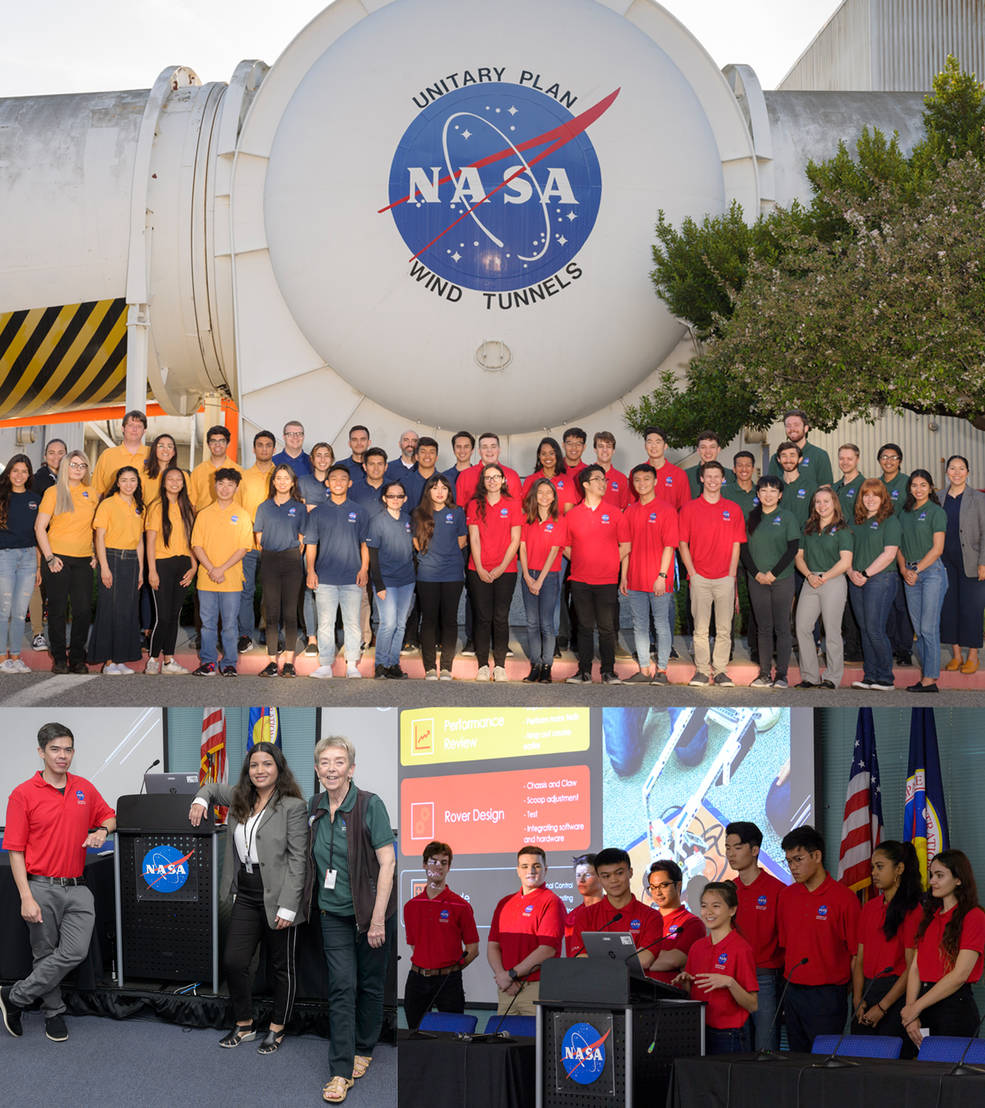
Arneson Discusses “Using Strategic Delay to Reduce Overall Delay in Commercial Aviation”
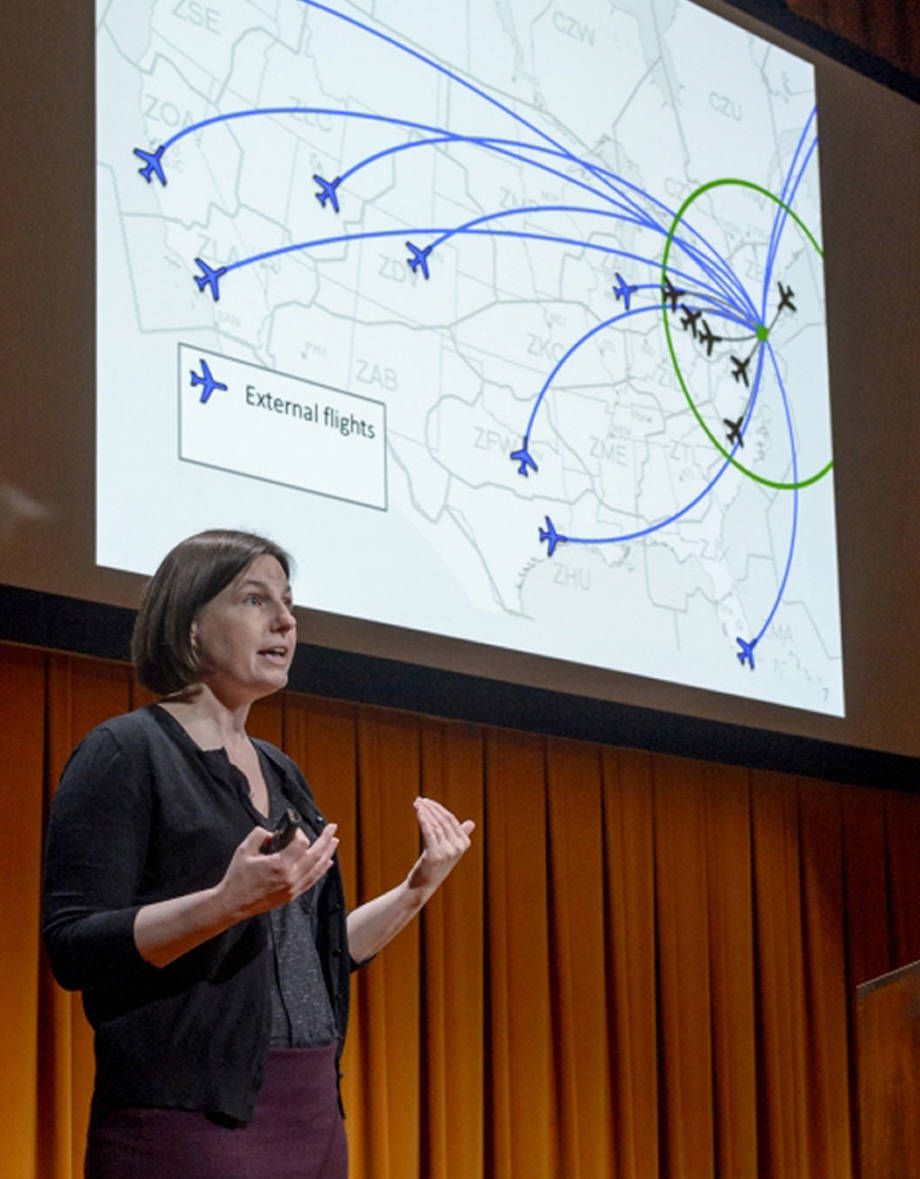
Seminar Discusses Cubesats and the Increasing Use of These Light-weight Platforms
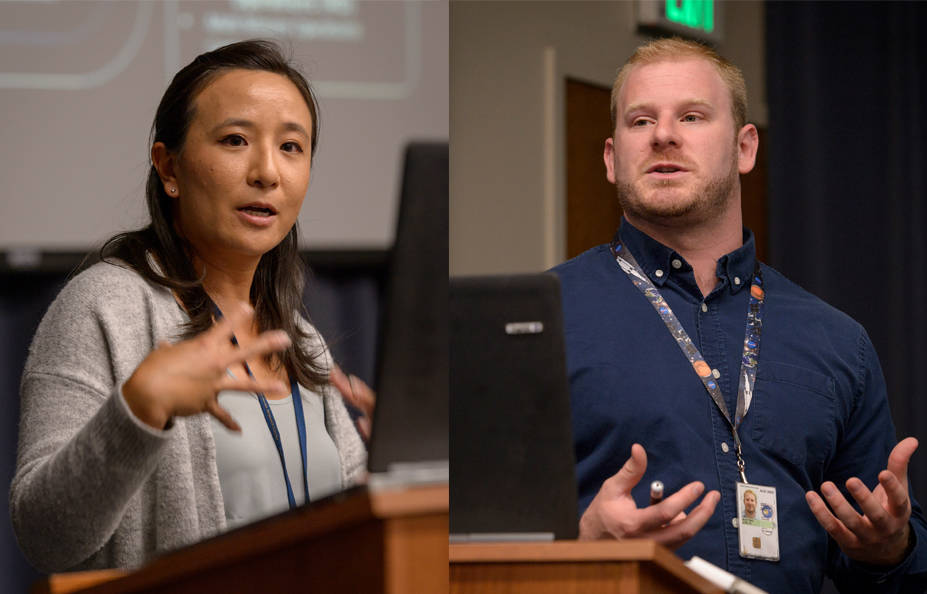
Leonhard Pfister Retires after 39 years of Service to Earth Science
As an active member on the Earth Science Division at Ames, Lenny Pfister played a valuable role in the support of research missions studying convection, atmospheric waves and water vapor exchange in the upper troposphere and lower stratosphere, the Earth Observing System program calibration and the validation of the Aura satellite. His expertise in atmospheric dynamics enabled him to become a leader in meteorological forecasting and flight planning as he supported of more than 20 successful airborne science campaigns from STEP in 1987 to ORACLES in 2018.
Pfister’s contribution to the campaign began early in the planning stage where he advised the science team on the meteorological conditions relevant for a given science question, which are key to identifying where and when the best measurements can be made. He also orchestrated and led pre-deployment forecasting and flight planning ‘dry runs’ for the specific deployment site a year in advance in order to arrive in the field with sufficient forecasting and flight planning experience for that particular location and time. Pfister’s modeling and analysis of aircraft and satellite data greatly enhanced the understanding of atmospheric waves and transport. His long and successful career in atmospheric science, has resulted in a stellar reputation and the respect of his peers. He has also trained the next generation of meteorologists and set a standard for others to follow.
In Memoriam …
Scott Sawyer, LCROSS and Iris Mission Aerospace Engineer, Passes Away
Dr. Scott R. Sawyer, age 58, passed away peacefully on April 27, 2019 at his home in San Jose, California. Born on Oct. 4, 1960 in Winter Park, Florida, he attended McKean High School in Wilmington, Delaware, received an undergraduate degree in physics at Massachusetts Institute of Technology, and held advanced degrees in astronomy from the University of Texas at Austin and in engineering from Stanford University. He had a keen interest in space. After settling in California, he worked for NASA Ames, Space Systems/Loral, Caelum Research Corporation, and Lockheed Martin as principle engineer or lead on various missions operation teams, or provided systems support on many successful missions including Geostationary Operational Environmental Satellite (GOES and GOES-R), New Millennium Deep Space One, Pathfinder, Landsat, Lunar Crater Observation and Sensing Satellite (LCROSS), and most recently on Interface Region Imaging Spectrograph (IRIS). He was founding partner of several technical consulting companies specializing in aerospace systems engineering.
Scott, a devoted father, was highly involved in his daughters’ school and sport activities. He was a parent volunteer, math tutor and mentored both of his daughters’ teams in the Tech Challenges. Over a 20 year span, he coached both of his daughters’ soccer teams “Surf Girls” (Na Wahine o ke Nalu – women of the surf) never missing a game and to first place finishes in many competitive tournaments. He was on the board on the West Valley Youth soccer league for many years and was the referee coordinator and arbiter. Additionally, he coached JV girls’ soccer teams at Westlake and Lincoln High Schools. With his daughters, he went on geocaching adventures across the US and orienteering. His hobbies were flying, scuba diving and martial arts (JuJitsu black belt). He proudly and successfully completed the Tough Mudder challenge in 2010.
In 2014, he was diagnosed with ALS, but he continued his soccer coaching from his wheelchair finally retiring in 2017 and continued to work from home using a specialized computer.
He was preceded in death by his father Donald Sawyer and mother Madeline Miller Sawyer. He is survived by his wife Colleen, daughters Lauren and Kelly, sister Linda Bradley of Columbus Ohio, stepmother Nancy Sawyer of Auburn Maine, many nieces and nephews and by Emerson, his faithful companion and service dog.
In lieu of flowers, please make donations to the ALS Association Restricted to Patient and Community Services.
A Celebration of Life will be held on June 30, 2019, at Campbell Community Center Orchard City Banquet Hall starting at 3:30 p.m. Feel free to post memories, stories, pictures or condolences on http://www.never-gone.com/memorials/scottsawyer. The website will be periodically updated. If attending the celebration and/or wish to speak during the program, email sawyerfamily47@gmail.com.
George Sutton, former Facilities Engineering and Real Property Division Chief, Dies
George Sutton sadly passed away on April 21, 2019. His family is having a memorial on May 31, 2019 at 11:00 a.m. in Redwood City.
The location is: Sequoia Yacht Club, 441 Seaport Ct, Redwood City, CA 94063
George began working at Ames in 1989 as a contractor, working on various projects at the National Full-Scale Aerodynamics Complex (NFAC). He then moved to the Unitary Modernization Project, where he served as a test manager. Later, George entered the civil service in 1994, working for the Ames Safety Directorate, supporting their work in systems safety and mission assurance. His work was recognized with the Quality Assurance Special Achievement Recognition (QASAR) Award from NASA Headquarters’ Safety, Reliability and Quality Assurance Office. George was then tasked to establish the Electrical Power Reliability Office (EPRO) in the Facilities Engineering Division. His leadership of EPRO was recognized by the Agency in 2002 with the NASA Exceptional Achievement Medal. In 2007, George became the Deputy Division Chief for the Facilities Engineering and Real Property Division. He took the helm as its division chief in 2010 and successfully steered the Center’s maintenance and construction of the Facilities Program until his retirement in February 2015.
All George’s friends from Ames are welcome to attend the memorial service on May 31, 2019.
National Day of Prayer Observance Held at Moffett
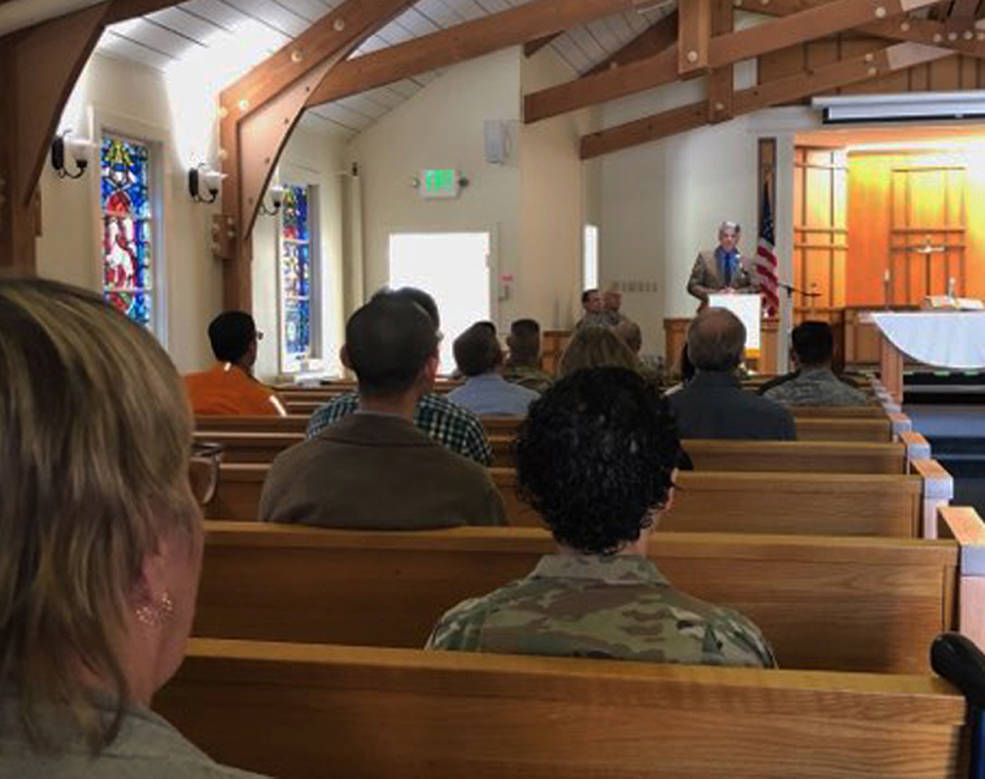

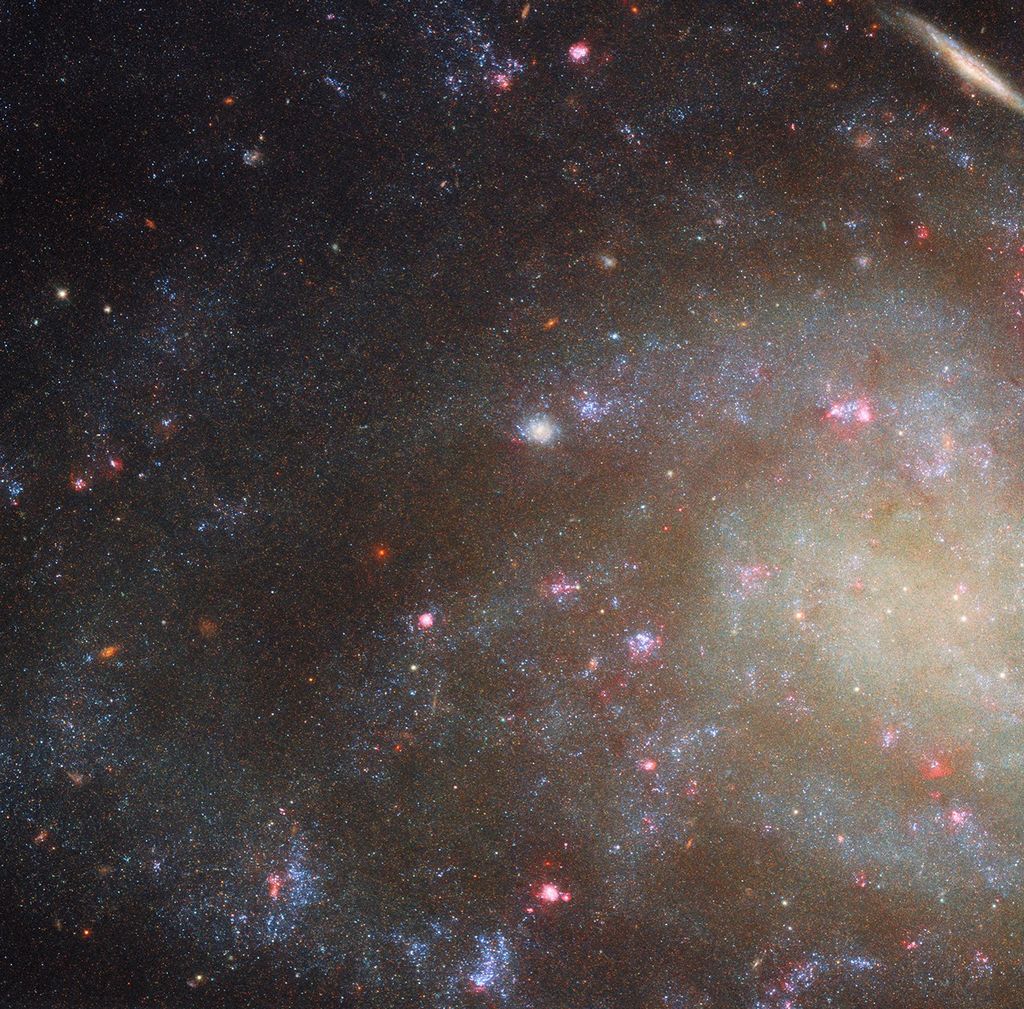
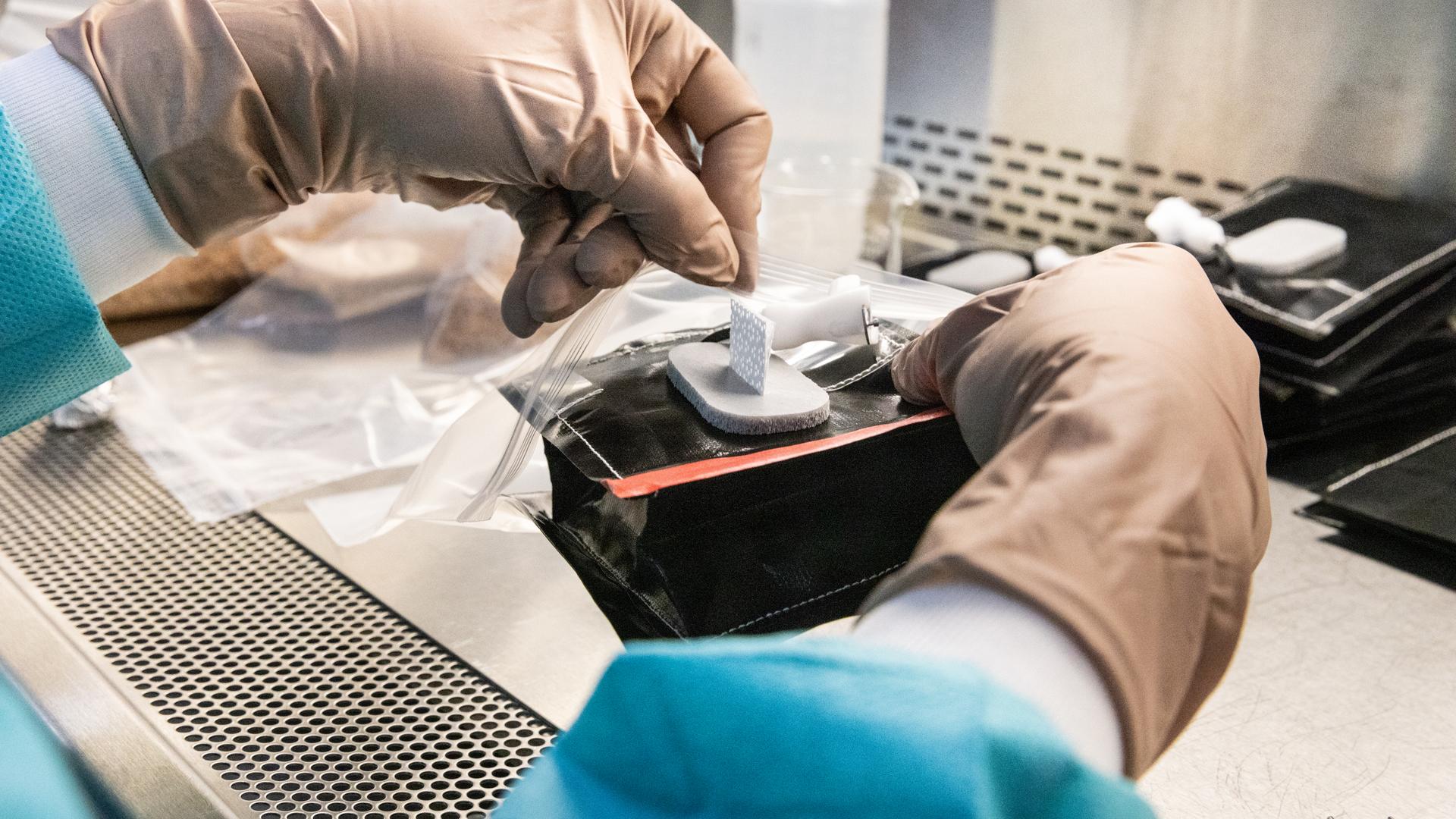
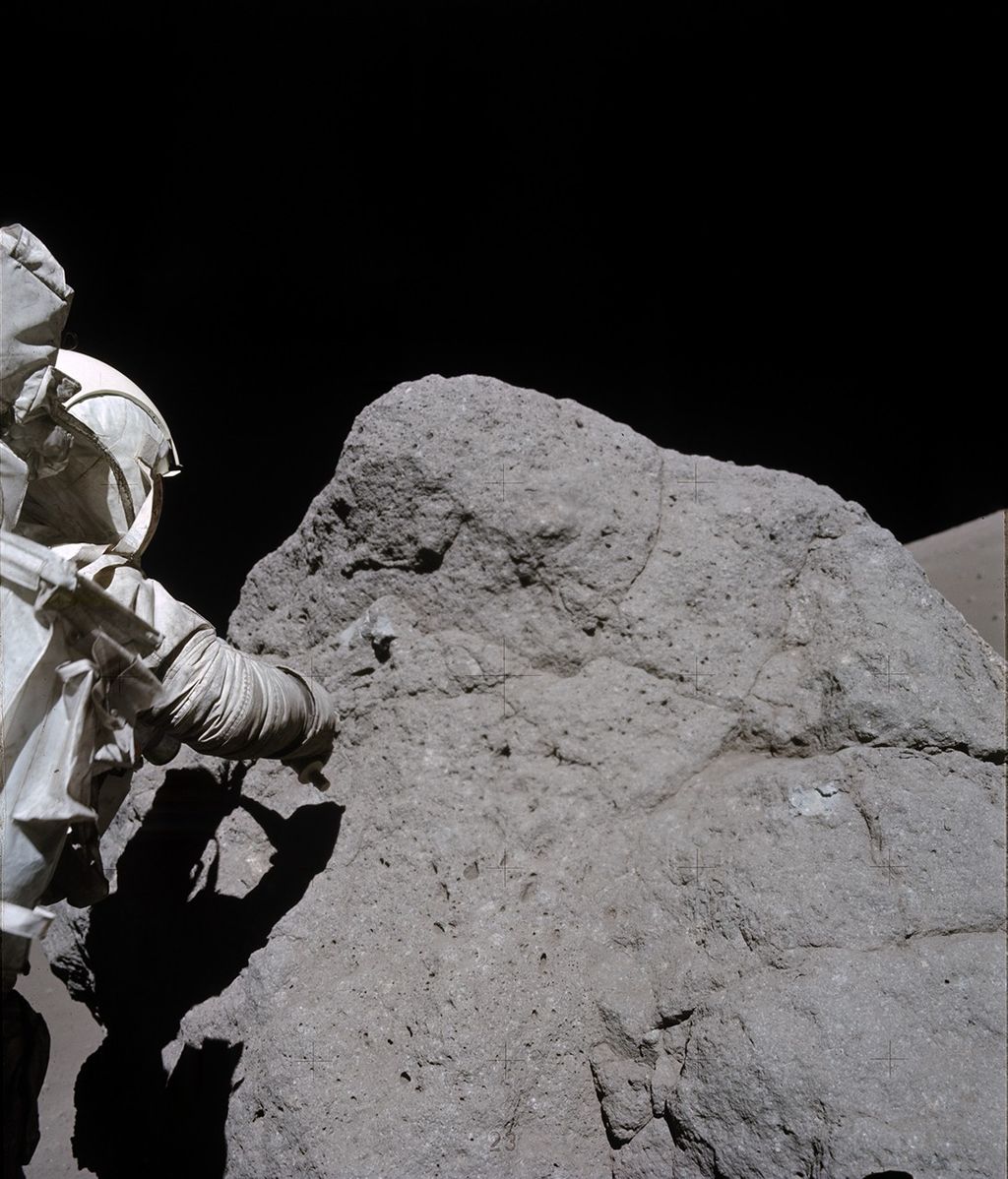
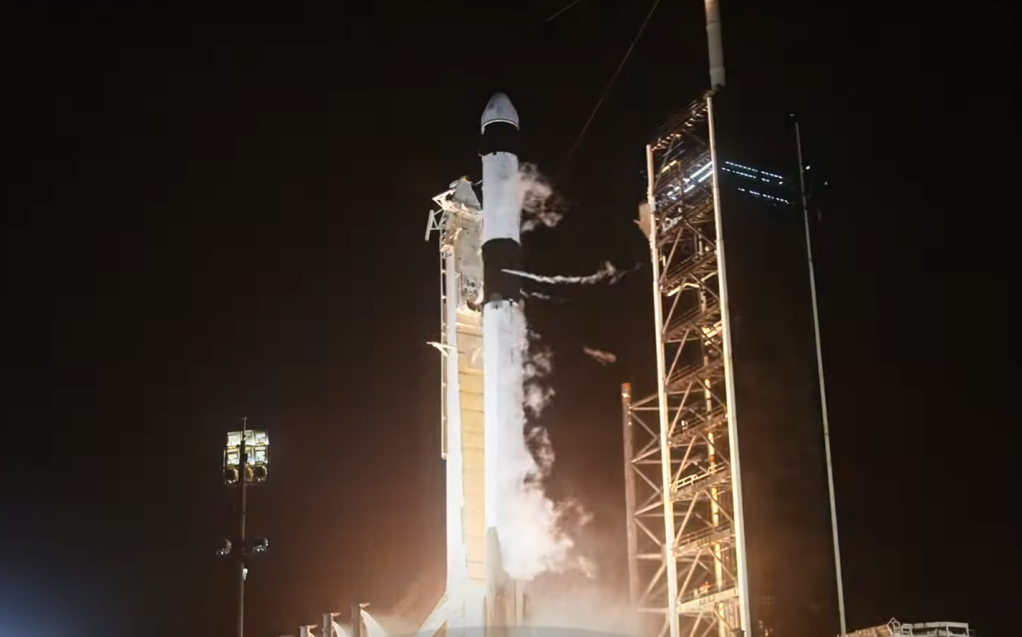



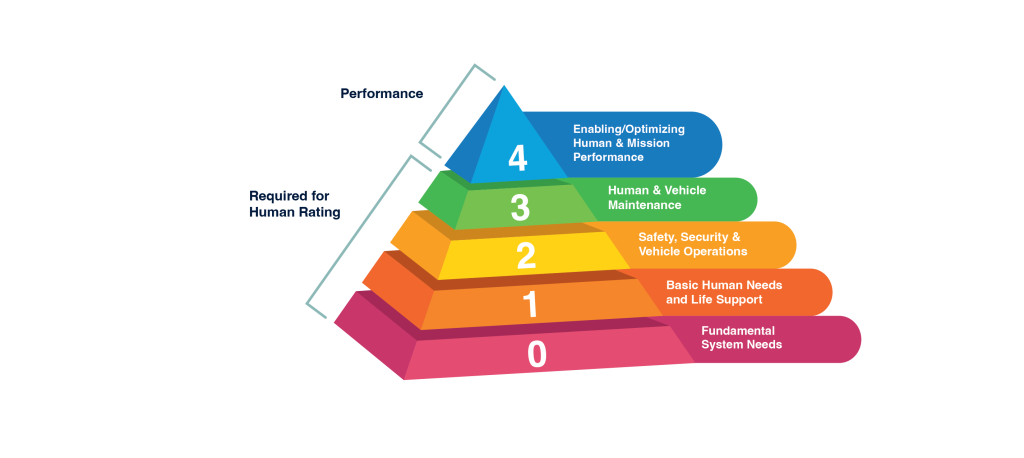
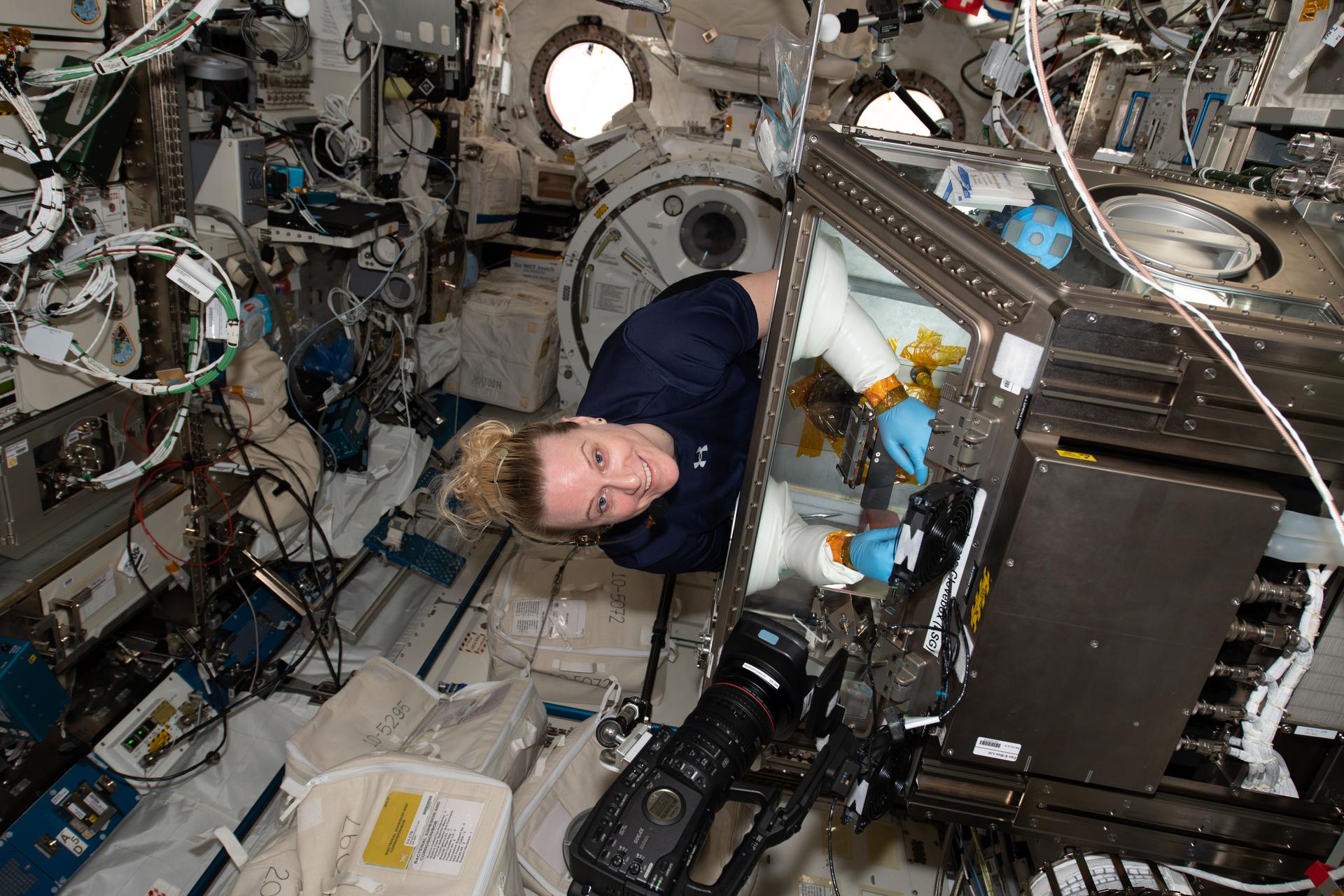
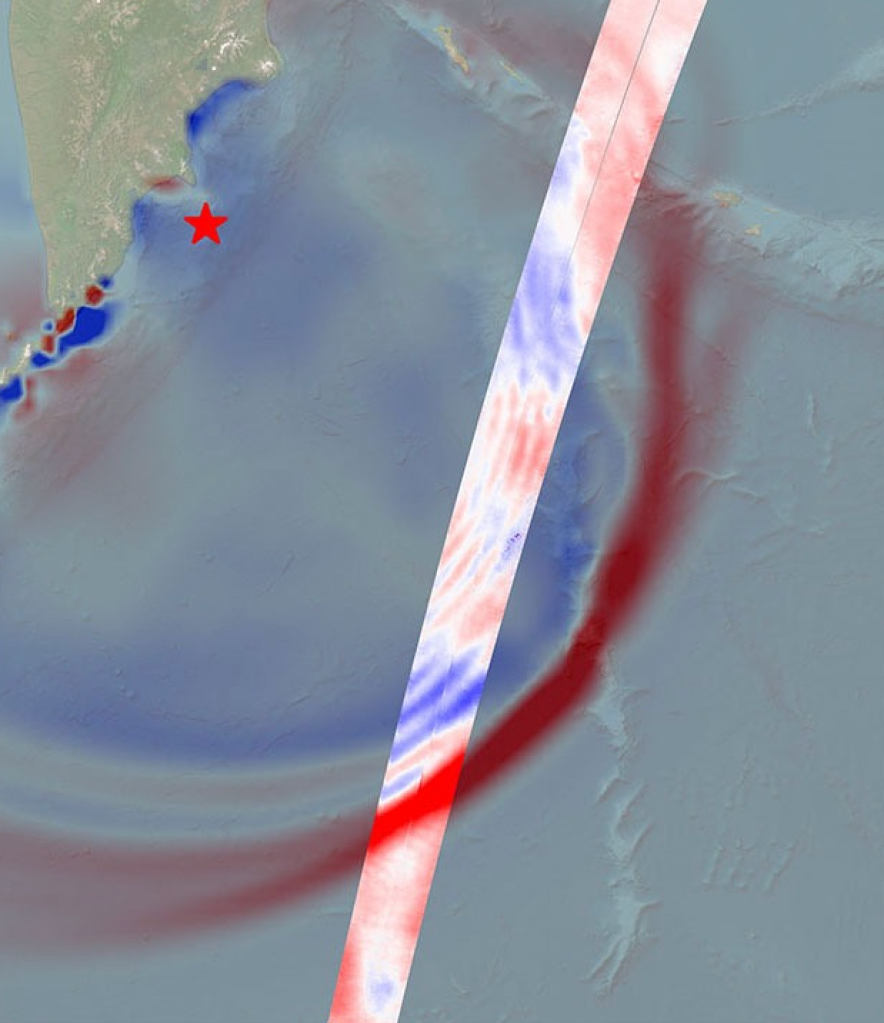





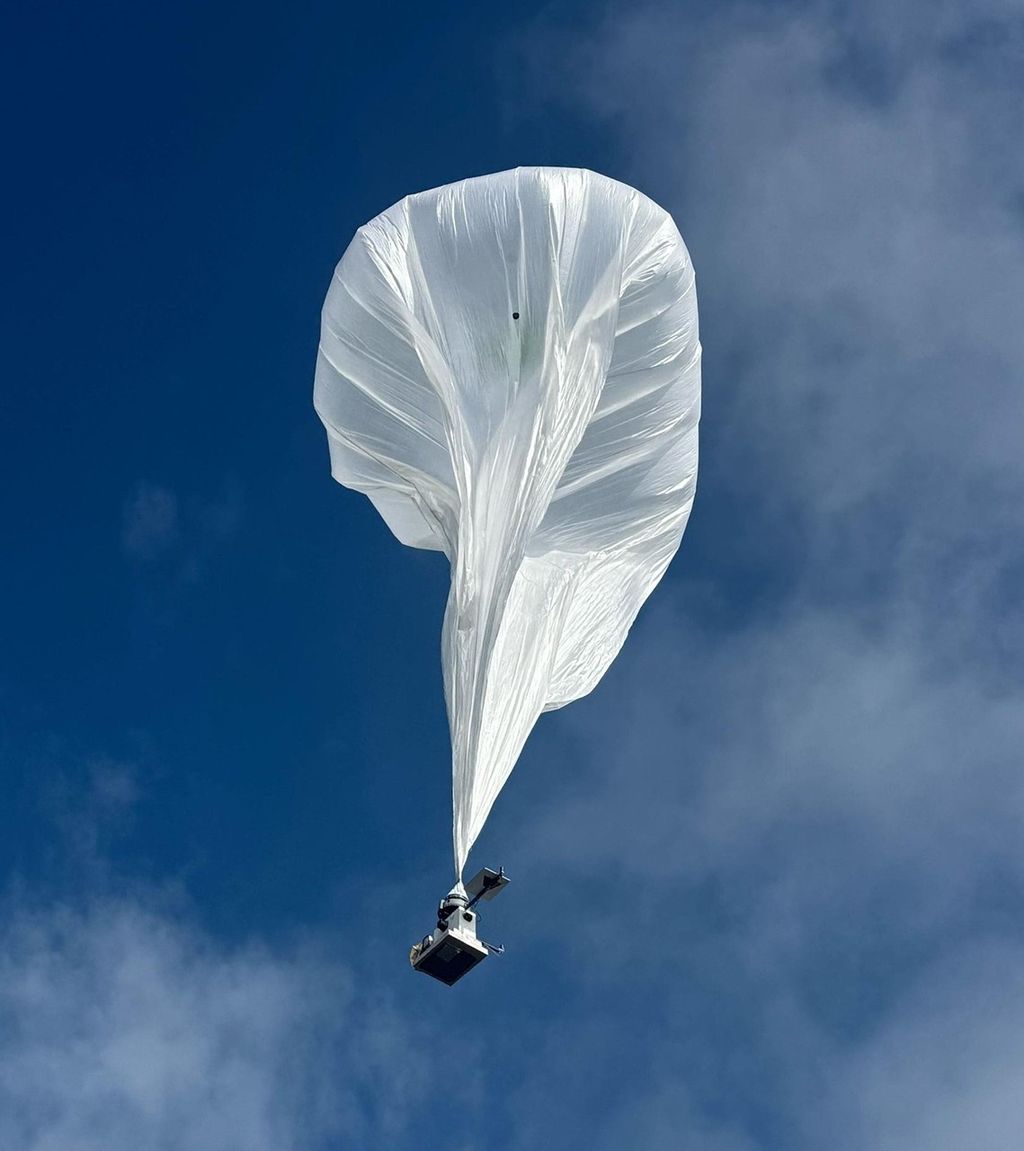







-Carolyn_Y._Ng.jpeg?w=1024)


